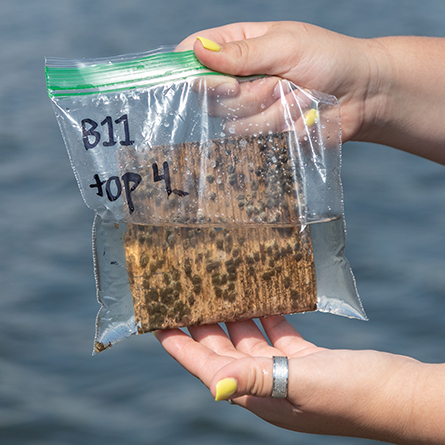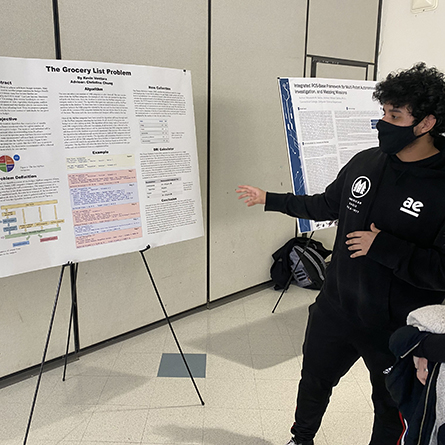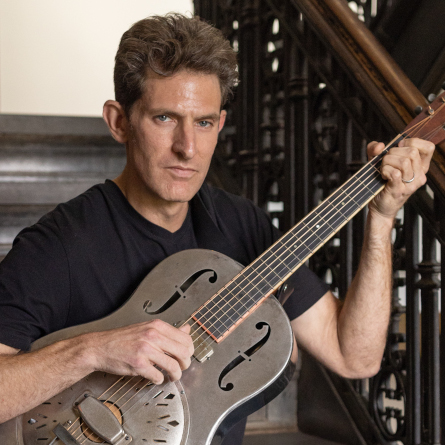
Summer science research on display at student poster symposium
Since the COVID-19 pandemic began and everyone started wearing masks, Niko Severino ’22 has found he often needs to use his hands to communicate with customers at the campus coffee shop where he works as barista.
“It’s harder to hear with the masks, so I often have to repeat, ‘Small or large?’ and gesture the sizes with my hands,” Severino said.
The experience gave him an idea for a summer science research project that would combine his interest in computer science—his major—and his interest in language and communication, which he has studied through double minors in linguistics and Hispanic studies.
With Professor of Computer Science Ozgur Izmirli as his research adviser, Severino worked to create a program that uses computer vision, a form of artificial intelligence, to read a specific set of gestures and lip movements.
Severino presented his work to the Conn community at a poster symposium Feb. 18 alongside 50 other Connecticut College Summer Science Research Institute participants who worked for eight weeks in the summer of 2021 with faculty from across the math and science departments to conduct a broad range of research. The unique program offers students an opportunity to do advanced research with faculty and even be published and present at professional conferences as early as the summer after their first year. Participants receive a stipend and campus housing, and also participate in coordinated events, including research presentations, invited outside speakers, social events and field trips. The program culminates with the poster symposium, during which students share their work with the entire College community.
“This program provides an amazing opportunity for students to work with faculty and fully immerse themselves in scientific research,” said Professor Emily Tarsis, a senior lecturer in chemistry who co-coordinates the program with Associate Professor of Physics Leslie Brown.
“Working five days a week for eight weeks, the students learn how to engage in the scientific process and to clearly articulate the work they’ve accomplished. The symposium gives them the opportunity to communicate their work to a broad audience and challenges them to explain their research to an audience with various levels of scientific training,” Tarsis said.
At the event, Suzanne Allen ’22 presented her poster, “Synthesis of Alpha Helix Mimetic Inhibitor of LasR Regular Protein,” based on the research she conducted with Associate Professor of Chemistry Tanya Schneider.
Much of Schneider’s research focuses on antibiotic resistance, and Allen’s work over the summer focused on targeting a particular protein in a common antibiotic-resistant bacteria to inhibit its ability to communicate in a process called quorum sensing.
“Essentially, the idea is that by preventing bacteria from talking to each other, we could prevent them from hurting their hosts,” Allen said.
Allen, an ACS-certified chemistry/ biochemistry major and mathematics minor, said she loved working in the lab and plans to continue to conduct research in dental school. She will be attending the University of Connecticut School of Dental Medicine in the fall.
Kevin Ventura ’22, who worked over the summer with Associate Professor of Computer Science Christine Chung on an app that creates a specific grocery list to meet individual nutritional needs within a specific budget, said he also hopes to continue to make discoveries that can make a difference.
“I really liked having the opportunity to work on a program that could help low-income families get the nutrition that they need,” he said.
A computer science major, Ventura is now designing a flying robot as part of an independent study with Professor of Computer Science Gary Parker. He plans to pursue a career in robotics after graduation.
“It’s a very exciting field with so many possibilities,” he said.

